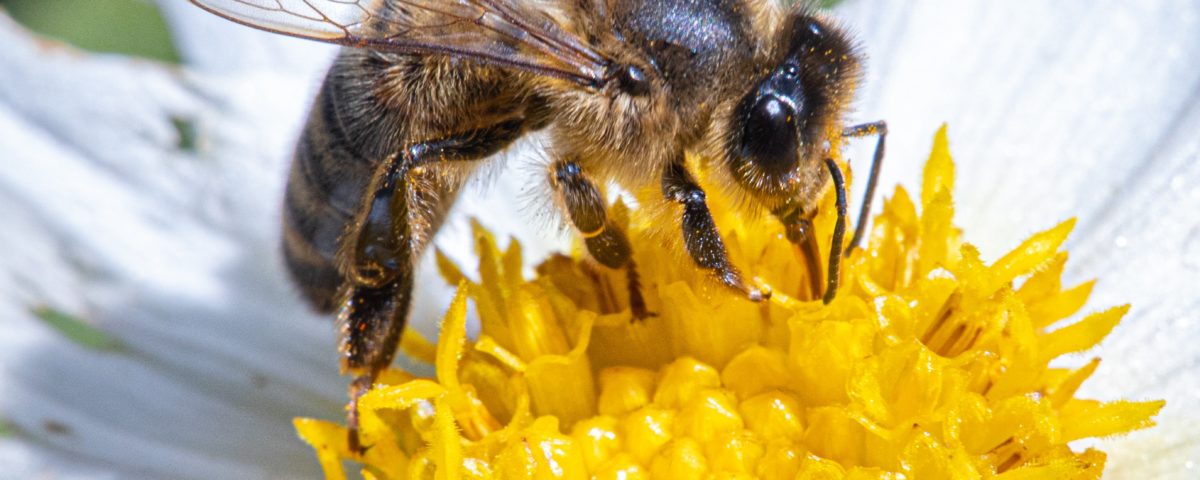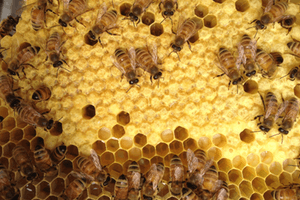- All-In-One Beekeeping for the Bees
- +1-608-728-8233
- info@beepods.com
BEEware of Stingers

Honeybees, a symbol in folklore from many periods throughout history
Most of us are taught from a young age that bees are little yellow insects that make honey and can sting you – two of the most commonly known characteristics of bees. A lot of people grow up scared of bees because they are not taught any of the good and beneficial characteristics of them.

To add to the problem, not everyone knows the difference between wasps, honeybees, and native bees. The issue with grouping all bees into the same category and not understanding the fundamental characteristics of each is that we develop many misconceptions of these insects. One thing people may find surprising is that they are not all considered bees, and another being that a honeybee is much less likely to sting you than a wasp.
We are going to explore the basic characteristics of honeybees in order to better understand what types of bees have a stinger, why they use it, and what happens when they do use it.
Do All Bees Sting?
Bees are infamous for their stings, and when they do it it hurts pretty bad! What most people don’t know is that not all bees can sting, nor do they want to (but we will get into that later). We could go into more detail of every bee, wasp, yellow jacket, bumblebee, hornet, etc. and what type of stinger they have (if they have one at all), but we are mainly going to focus on bumblebees, wasps, and honeybees. If you are going to get stung, it is most likely going to be one of those three insects that fall under the Hymenoptera family.
When it comes to honeybees, only female workers and the queen have stingers. Unlike the worker bees, the queen’s stinger is smooth so she is able to sting more than once. This is similar to bumblebees; only the female workers and queens have stingers and their stingers have a smooth surface. Wasps also have a smooth stinger, which is why if a bumblebee, queen honeybee, or wasp stings you, you will not find that they left their stinger behind. The only time you will find the stinger is if you get stung by a female worker honeybee. They have barbed stingers. These barbed stingers get stuck inside of your skin and can have the potential to sting deep into the skin and be venomous if you do not remove them.
Why Sting?
If you have gotten stung, it was most likely the result of a wasp. Wasps are more aggressive in nature than honeybees or bumblebees. Wasps can be easily provoked by other animals or humans. They often use their stinger not only for self-defense, but for food. They will use their stinger to capture and kill their prey. Since they have a smooth stinger, they have the ability to sting their prey multiple times, releasing a lot of venom. The downside to having a smooth stinger is that it can slip out of its prey. Make sure to be cautious if you see a wasp, because they may sting you when you try to brush it away if it feels threatened in any way.

The primary reason for honeybees using their stinger is self-defense. Trust us, they do not go out of their way to sting you! Honeybees will likely even give you a warning before stinging you, so make sure you watch for these warning signs. One of the warning signs we call “bee bumping,” which is exactly what it sounds like: the honeybee will bump into you to show that it is getting agitated. Honeybees are inherently peaceful, and if they sting you they will die, so they only use their stinger as a defense mechanism when they have no other choice. Bumblebees are in the same boat as honeybees, they will only sting you if absolutely necessary and they feel that they or their hive is in danger. Honeybees and bumblebees don’t go looking for trouble, so if you watch for warning signs and are cautious, then you will be okay!
In general, it’s safe to say that bumblebees and honeybees don’t go out of their way to sting humans, but it does happen. As for wasps, keep your distance and try not to aggravate them – they are not as nice as our fuzzy friends!
What Happens When You Get Stung?
First things first, if you get stung and the stinger is inside of you – get it out! But, what actually happens when they sting you? For wasps, queen bees, and bumblebees, you need to be careful since they do have the capability to sting you more than once. The good news is that their stinger won’t get stuck in you! As for honeybees, their barbed stinger will get stuck inside you and essentially disembowel the bees.
The problem with grouping wasps, honeybees, and bumblebees into the same category and not understanding the fundamental characteristics of each is that we develop many misconceptions of these insects. It’s unfortunate because there are so many amazing things about honeybees to be learned, like their role in pollination of our fruits and vegetables!
If you want to learn more about honeybees, wasps, bumblebees, or any other type of bee, reach out to us at our contact page. We can help you learn more about these fascinating creatures, and learn to be around them without fear! And if you’re looking for resources on stingers, don’t worry – we’ve got those covered, too.
Elizabeth Allon
Latest posts by Elizabeth Allon (see all)
- Short But Mighty: The Stages of Life - January 26, 2022
- Honey Bees Vs. Highways - January 19, 2022
- 4 Ways to Save The Bees in 2022 - January 12, 2022



